Tablecloths, intended for many events, add their own special touch to the celebration process. Knitting products with crochet in various techniques, patterns and descriptions of the work offered in this article will help novice needlewomen to realize their dreams and turn an ordinary feast into a wonderful family celebration.
Selection of materials and tools
In most cases, cotton yarn with a strong twist is used for knitting tablecloths. This gives the fabric a denser structure and creates a starched look. If threads with a medium or weak twist were used, then after finishing the work, it is advisable to starch such a tablecloth so that it can hold its shape and form even, beautiful folds.
Also, for special occasions, you can use acetate or silk yarn. When knitting tablecloths from silk or acetate threads, it is recommended to do the work in one piece due to the strong flowability of such yarn.
If the product is still intended to be made from motifs, then a reliable method for fixing the ends of the thread should be selected. This is due to the multiple washings of the finished fabric. Do not forget about the careful selection of the knitting tool.
Nowadays there are many hooks of different lengths, thicknesses and compositions:
- plastic,
27 - wooden,
- aluminum,
- metal,
- made of stainless steel.
From this list, according to experienced craftswomen, you should choose short (regular) hooks, since long ones are intended for Tunisian crochet and metal (stainless steel) solid with a small notch on the handle. They, unlike the others, do not stain the yarn and slide easily along the thread. You should also pay attention to the head of the hook itself.
It shouldn't be too sharp, so as not to hurt yourself or experience pain and discomfort when working. But it shouldn't be too dull either, since it will be hard for it to enter the loop.
It is advisable to try out several types of hooks before starting knitting and choose the best and most convenient one.
How to calculate the size of a tablecloth?
Due to the purpose of a particular type of tablecloth, they have their own sizes.
So, they are intended for:
- everyday use;
- festive feast;
- buffet table.
For the first option, the tablecloth dimensions should correspond to the table dimensions and hang from its sides at a distance of 15-20 cm. This does not prevent visitors from feeling comfortable at it. The second option provides for tablecloth dimensions that exceed the tabletop parameters by 20-30 cm.
For the third option, the length and width of the tablecloth should preferably exceed the dimensions of the table by more than 30 cm. The final limits are unlimited.
Classic square tablecloth
Crochet tablecloths, the patterns and description of which are offered nearby, is a technique of square motifs. It is this technique that is used in most cases to create elegant and unusual products.

This model is suitable for use on both square and round tables. It is advisable to make it from cotton yarn using a hook No. 2-3. The color scheme can be different, in accordance with the interior and the dishes and decor used. But the most traditional color is white.
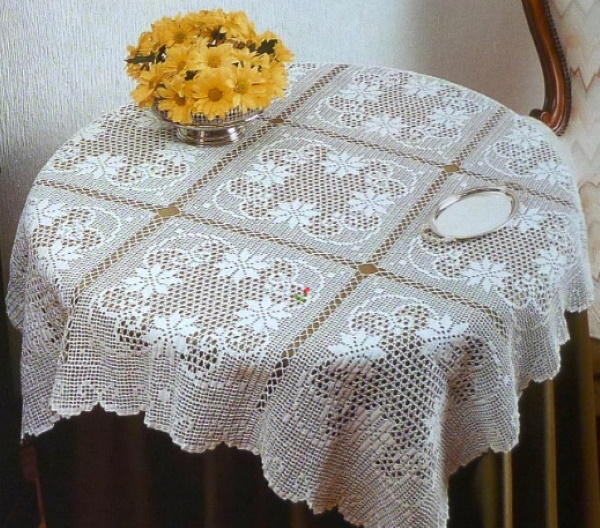
When knitting motifs, their connection can be done both during the work and after its completion. But, according to experienced craftswomen, the first method is more convenient and practical. When the tablecloth is knitted, it is advisable to starch and steam it. The next model also represents a square tablecloth made from the same large motifs, but applied to a round table.
The main technique used in knitting this model is fillet. But it is done in combination with light openwork. In order not to get lost and not to disturb the structure of the pattern, it is necessary to strictly follow its scheme, especially when performing reverse rows.
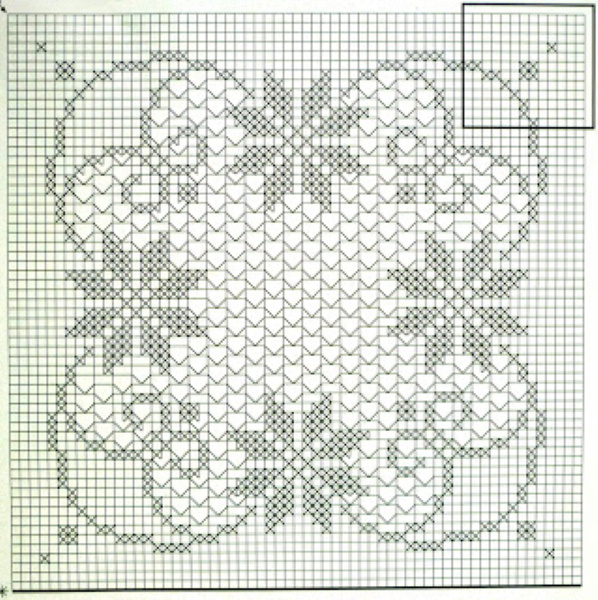
The motifs are connected during knitting of the outer row.
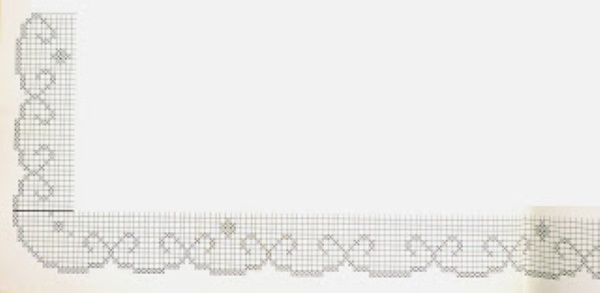
After completing the main fabric, its edges should be decorated with a binding according to the presented scheme. It is carried out along the perimeter of the tablecloth in straight and reverse short rows using the same technique. The finished product must undergo wet-heat treatment.
Simple rectangular tablecloth
To make a tablecloth of the required size, you should initially determine what table it will be used for and calculate the required dimensions. To do this, measure the length and width of the tabletop and add a certain (for its intended purpose) allowance.
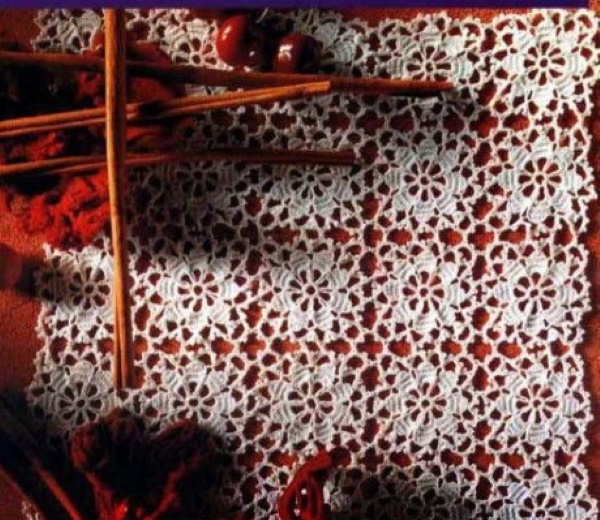
After this, it is recommended to make the selected sample and compare its parameters with the obtained calculations. Minor deviations from the required measurements when knitting tablecloths are allowed.

It is advisable to use cotton-containing yarn and a hook of the corresponding number for such a model. It ranges from No. 1.5 to No. 3. Connect the motifs according to the presented scheme. These motifs do not need final binding.
The crochet tablecloth, diagrams and descriptions below can be used in a more casual setting. This tablecloth is also made using the technique of individual motifs. They are round in their structure, but due to the elongated loops from the chain they create a square effect and serve as a place for the adhesion of motifs.
It is advisable to use cotton yarn, but a small content of viscose or synthetic fibers is also possible. For a denser fabric, you can use a hook with a thickness almost identical to the thread. If you want to get a tablecloth of a less dense structure, the hook number should be used an order of magnitude thicker.
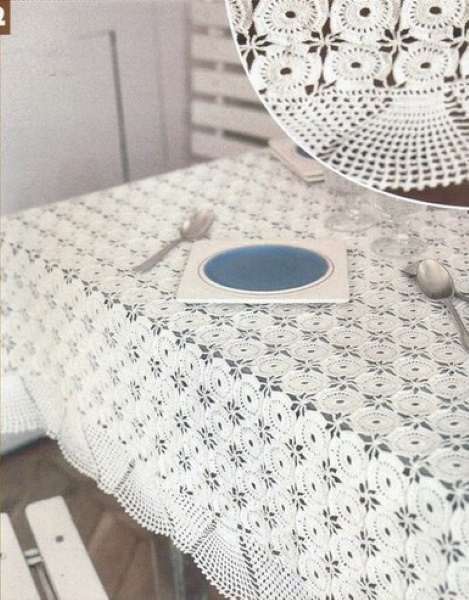
When initially calculating the length and width of the required product, do not forget about the binding, the width of which can significantly affect the final dimensions. If the number of full motifs slightly differs from the calculations, they can also be adjusted using the binding.
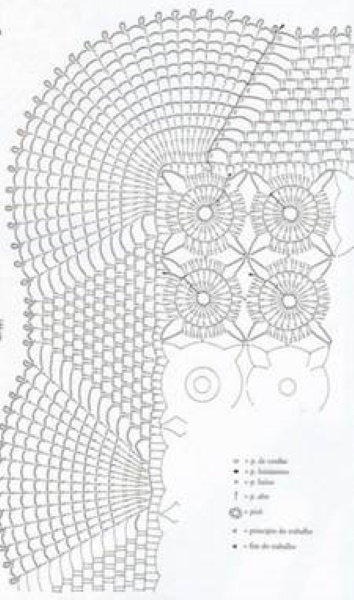
The edge of the tablecloth is decorated with binding after all the motifs are joined into a single piece of fabric by knitting along its perimeter in straight rows only. It is correct to connect at the end of the row to avoid the appearance of additional loops or the formation of large spaces. When knitting motifs tightly, such a tablecloth does not need to be starched, but can be limited to wet-heat treatment.
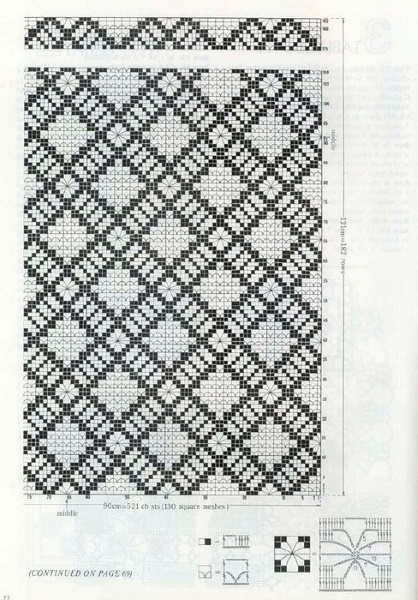
The following picture shows a version of a smart tablecloth for tea parties. It is made from a single piece of cloth with a simple geometric pattern.
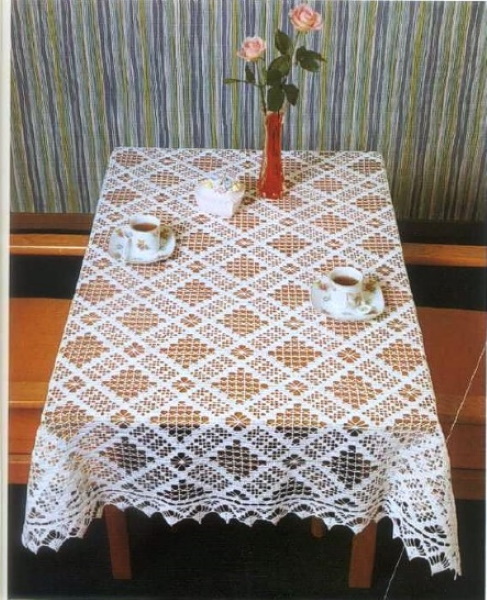
To knit this model, you can use thin cotton threads, as well as viscose or silk. A hook with a size 1-2 is preferable. Close attention when working on this model is required at the beginning of the process. Following the presented pattern exactly, you need to knit several rapports in height. After that, the pattern itself will tell you how to knit.
When calculating the number of rapports of the length and width of the tablecloth, you should pay attention to the symmetry of the longitudinal and transverse sections between themselves. Such a geometric pattern can be used to knit a square tablecloth, and also to use it for a round table.
After finishing knitting the main fabric, it is advisable to decorate its edges with an openwork edging. It can be either medium or wide in size. Its choice is made individually at will.
The color of the tablecloth also depends on the interior of the room and the cutlery used in the ceremony. If it is made in the same tone as the dishes, it will create the integrity of the composition of the entire table with the surrounding furniture. If it is knitted in a contrasting color, it will emphasize the elegance and beauty of the tableware. It is recommended to starch and iron the finished tablecloth.
Openwork
Crocheting a tablecloth, the patterns and description of which are presented below, requires certain experience and skills.

The yarn used is mercerized cotton or with the addition of viscose. Hooks accordingly No. 1-2.
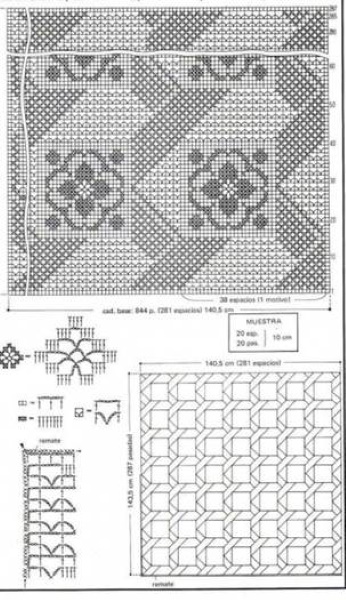
This model contains 2 knitting techniques: regular and filet. It is made of solid fabric and represents a geometric pattern on which squares with a filet composition are located.
When determining the size of the tablecloth, it is necessary to measure the tabletop and add allowances of the required length. Then calculate the number of cm per 1 full pattern repeat based on the knitted sample. Then compare the required tablecloth dimensions with the length and width of the completed sample and establish the number of whole repeats included in the required parameters.
Before starting work, it is recommended to study the knitting pattern diagram very carefully, since their implementation requires considerable experience. Having thoroughly analyzed each of their elements, you can begin to work.
When working reverse (purl) rows, the pattern should be read from left to right.
After finishing the knitting process, it is advisable to decorate the tablecloth with a thin edging consisting of 1 row of single crochets and 1 row of "crayfish step". This will prevent the edges of the fabric from further deformation. Perform wet-heat treatment with the finished tablecloth.
Festive tablecloth
For special occasions, you can make a tablecloth, the model of which is presented below.
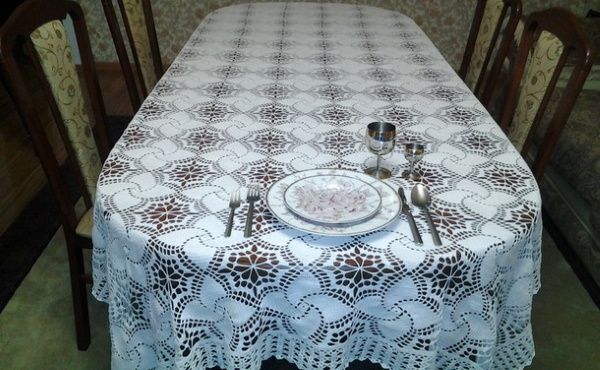
It is made of snow-white mercerized cotton with hook No. 2.5-3. Consisting of square motifs, which when connected create another additional pattern, it impresses with its richness and grandeur.
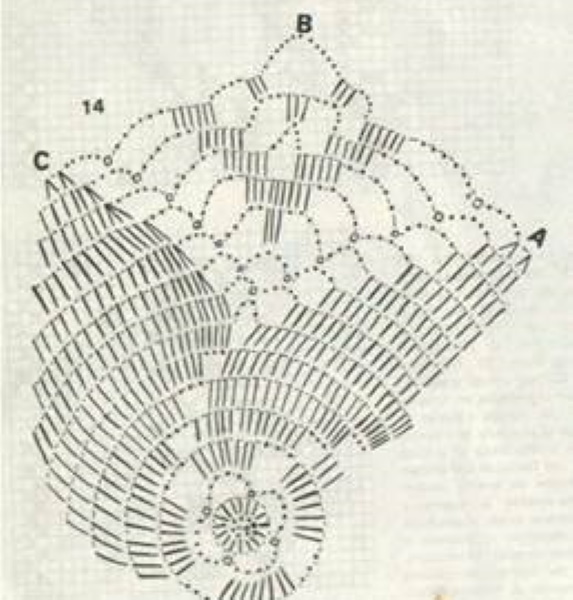
It can be used both on a rectangular table and on an oval one. When calculating the length and width of the tablecloth, small deviations are allowed in order to achieve a whole number of full motifs of the pattern. It is better to connect the elements in the process of knitting the outer row.
After finishing the main canvas, you should tie the edge of the tablecloth around the entire perimeter. For decoration, it is advisable to use a border of a small, uniform pattern so that the focus of attention is not lost on the canvas itself.
Round tablecloth
Needlewomen who have ever knitted round napkins will have no trouble making a tablecloth. It consists of the same patterns, but is larger in size.
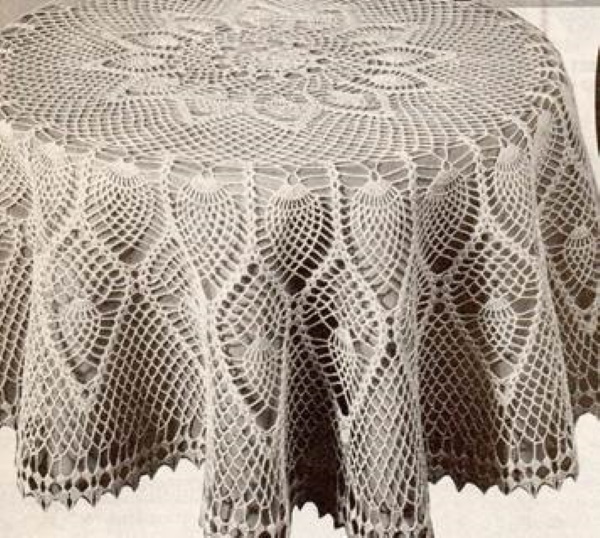
It can be made from different types of yarn. The thickness can also vary from thin to medium. It is advisable to use a hook number 1-2 larger so that the fabric looks more openwork. When making a pattern, it is necessary to correctly connect the loops at the end of the row with the beginning to avoid distortion of the ornament and the size of the inter-loop space.
The diameter of the tabletop also plays an important role when knitting a round tablecloth. Since when the tablecloth reaches the edge of the table, it can be made further in a circle, maintaining evenness in relation to its middle. But there is an option when the tablecloth from the end of the tabletop can be rounded downwards and have a convex structure corresponding to the shape of the table.
The choice of option is made depending on the purpose of the tablecloth:
- In the first case, the product is used mainly as decoration for a buffet table and is laid over a larger fabric tablecloth. The color scheme in this situation should match the main material. The color of the knitted tablecloth can be chosen in the same range as the main one, but a tone or two darker or lighter. It is also possible to make it in a contrasting color, but it should fit into the surrounding interior. In most cases, white is chosen for a striking difference from the main tablecloth.

- In the second case, the knitted tablecloth can be used for everyday use and have small allowances. It is advisable to lay it without any extraneous auxiliary objects.
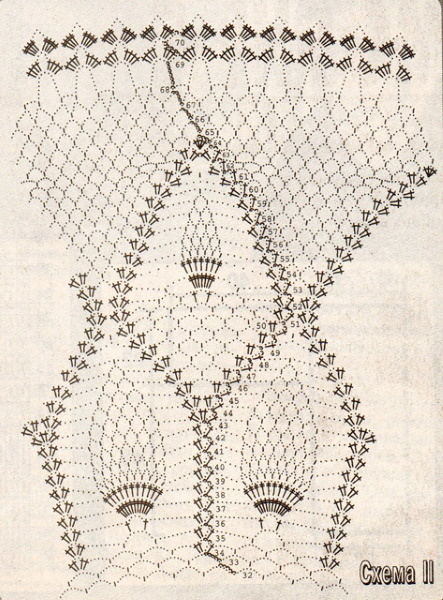
When knitting a tablecloth with a flat surface, it is necessary to add loops evenly so that there are no unnecessary bulges or tension. It is recommended to decorate the edge of the finished tablecloth with a binding that matches the selected pattern. If the central part of the product has the appearance of a flower or an uneven openwork pattern, then it is advisable to use a more calm and uniform border for the binding.
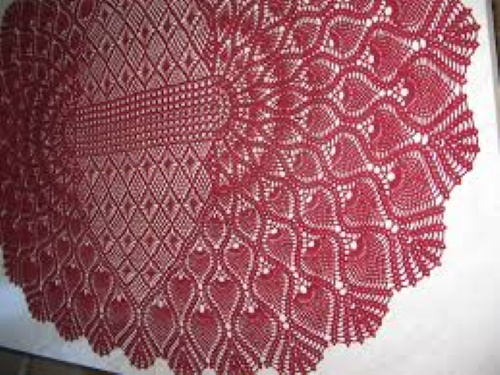
If the middle of the tablecloth is the same pattern, knitted in a circle, then the cut can be decorated with an interesting openwork wide edging or small floral and round motifs. The combination of patterns in such models will be ideal. After finishing knitting, the finished tablecloth should be wet and heat treated.
Oval tablecloth
Knitting a crochet tablecloth, the patterns and description of which are presented below, is an analogy to making a napkin of the same name. Therefore, when choosing a base, you can use any pattern of an oval napkin. By adding the same pattern or something else, you can create an exclusive tablecloth.
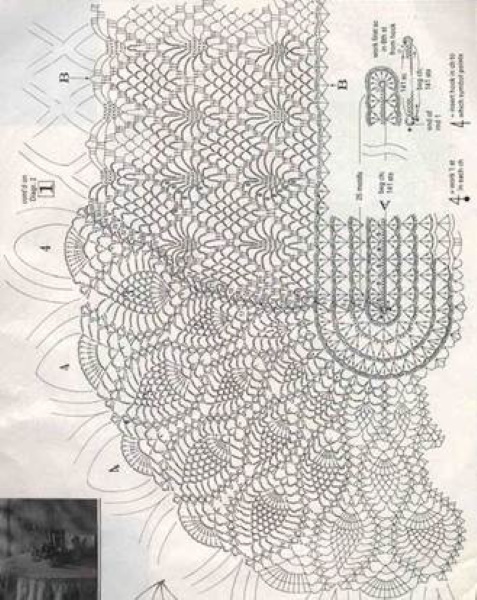
When knitting it, you can use different types of yarn: from light and thin cotton to silk, medium-thick acetate and twist. Hook numbers can also vary from 1 to 3.
The difference between this type of product and the round one is that the distribution of additional loops is not uniform, but only in four areas located at the conventional corners of the tablecloth. This type of addition is used when knitting a whole piece of fabric.
If the tablecloth consists of different types of motifs, then their connection at the turning points will also differ from the connections on the sides. It will be rarer. In this regard, it is necessary to carefully follow the knitting pattern (if available) or record on paper the method of joining the motifs in these areas to avoid mistakes during further connection.
Depending on the pattern used, it is also necessary to determine whether there is a need for a binding or not. After completing the knitting, it is recommended to steam the finished tablecloth.
Fillet tablecloth
Knitting curtains, tablecloths, shawls with a crochet hook can be done on the basis of a regular grid. One of the schemes with a description is presented in this section.
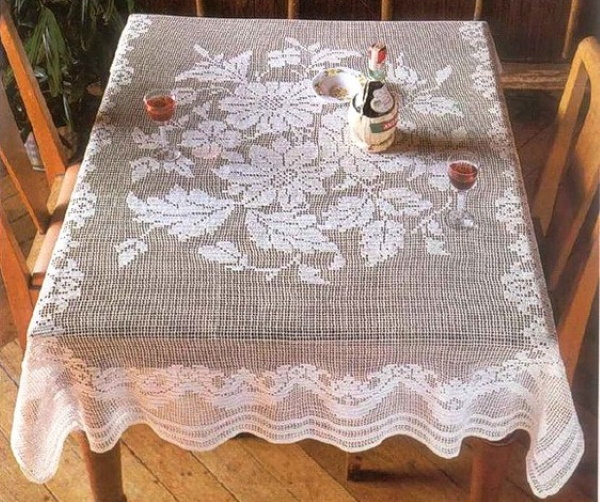
Basically, for knitting tablecloths in the filet technique, thin cotton yarn is used, and it is possible with the addition of a small amount of viscose fiber. The hooks should correspond to the thickness of the thread and be within the range of No. 0.75-2.
The accent of this type of knitting is a floral or any other composition created in the process of filling the cells of a regular grid with double crochets. The technique itself is not at all complicated. It involves only 2 types of symbols: double crochets and air loops.

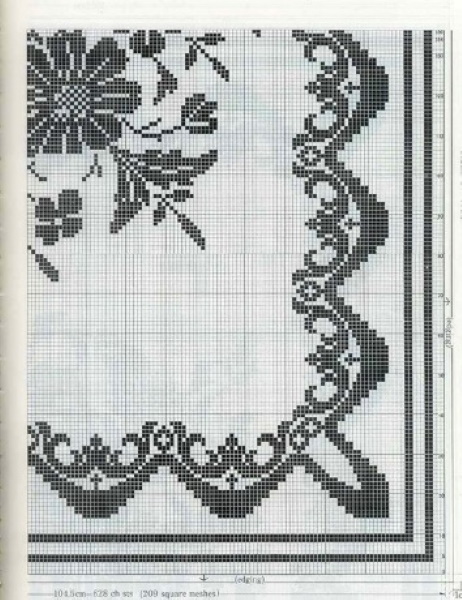
The mesh is knitted by constantly alternating one loop with the other, and the cells with the pattern are filled with two double crochets.

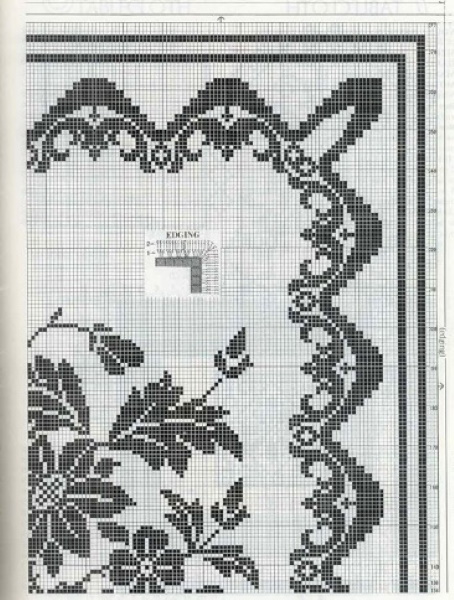
When knitting 2 columns of the pattern in the cells, they should be made with a single top so as not to disturb the structure of the grid itself. When working with the same cells later, the crochet punctures should be made in adjacent loops, not in one. Simultaneously with the central ornament, the decoration along the edge of the tablecloth is also made, also located on the grid.
If desired, you can decorate the cut with fixing rows of single crochets or a row of "crayfish step". This tablecloth model needs starching.
Tablecloth made of motifs
The following model is a variant of a smart and very delicate tablecloth. It is made of round motifs, knitting which is not particularly difficult.
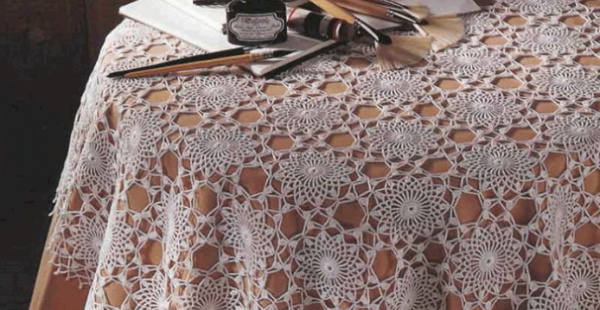
The yarn used is thin cotton or cotton thread containing viscose. Its presence in the composition provides the finished product with softness and good drape. Optimal hook numbers are 1-2. This tablecloth model is universal. It can be knitted on a round, square or rectangular table. This is done by varying the arrangement of the motifs.
A more effective way to join elements is during work. It provides the tablecloth with practicality and wear resistance with frequent use. The most advantageous color solution in this model is white. It creates the most solemn combination with any single-color coloring of the main tablecloth. But variations in this regard are possible at will and individual approach.
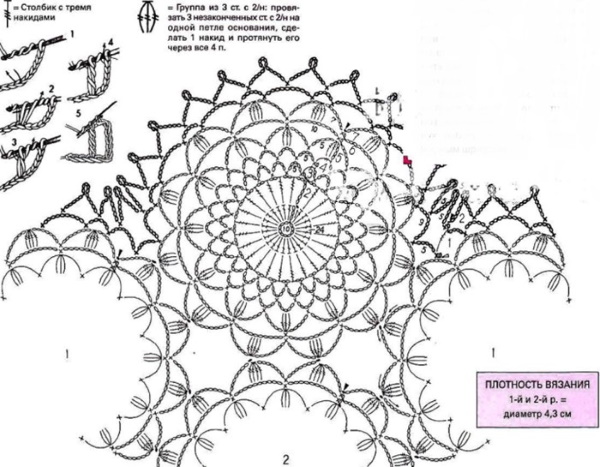
After finishing the tablecloth, it is recommended to decorate its perimeter with a piqué, consisting of arcs of air loops, in the middle of which a pique is made. This will give the product greater elegance and airiness. At the end of the work, it is necessary to carry out wet-heat treatment with light starching.
Recommendations for beginner needlewomen
To ensure that knitting brings pleasure and positive emotions from the very first steps, you should follow a few simple recommendations:
- Use only high-quality yarn (even without bulges).
- Use trial and error to select the most convenient type of hook.
- After trying all possible options for the position of the hook in your hand, choose the most comfortable one.
- Learn the symbols for all types of loops and learn how to make them correctly.
- Understand how to read pattern diagrams.
- Start knitting with the simplest and most understandable of them.
- Gradually introduce more and more complex elements into the work.
Only by creating comfortable working conditions can you achieve the most positive result. To get moral satisfaction and pleasure from crocheting tablecloths, napkins and other beautiful things, it is enough to use the proposed patterns, follow their description and adhere to the necessary and simple tips and recommendations.
Video about crocheting tablecloth
How to crochet a tablecloth with a floral motif:
